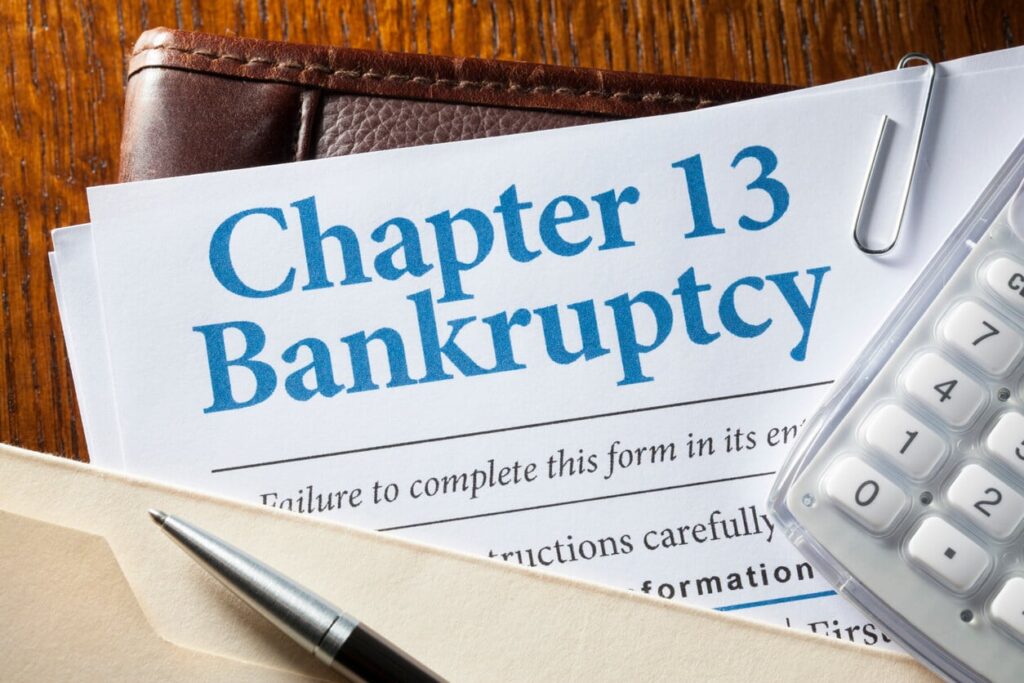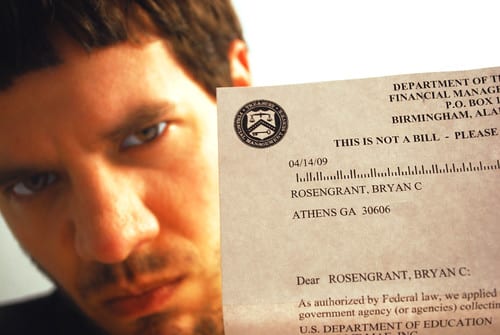Your Guide to Chapter 13 Bankruptcy | DeLuca & Associates

Any bankruptcy filing comes with questions. It can be a complex process, so you need to know what to expect. If you’re filing for Chapter 13 bankruptcy in Las Vegas, knowing what to expect can help you prepare and give you confidence. From our bankruptcy lawyer Nevada team, here is Chapter 13 bankruptcy explained.
What Should I Do Before Filing for Bankruptcy?
Even before you begin filing for bankruptcy, it’s essential to analyze your debt and determine if that is the best course of action for your situation. Individuals will also have the choice between filing for Chapter 7 or Chapter 13 bankruptcy, depending on the type and extent of their debt and income status. Before filing, you’ll need to:
- Evaluate your debt
- Analyze our income
- Take a required bankruptcy pre-filing course
Don’t file your bankruptcy petition before meeting with an experienced bankruptcy attorney. There are things that you can do even before you file to improve the outcome of your case. Also, you want to go into the process with realistic expectations of what Chapter 13 bankruptcy can do for you.
Contact our Nevada bankruptcy lawyers to schedule a free consultation to discuss your case.
What Can I Expect During the Chapter 13 Bankruptcy Process?
At a glance, there are a few things to expect in a Chapter 13 bankruptcy:
- An inventory of your income and debts – To achieve a good result in your case, you need to report your debts, assets, and income. This information needs to be complete and accurate. Expect to spend time gathering and documenting this information.
- Hearings and meetings – There will be at least two hearing dates for your case – a meeting of the creditors and a confirmation hearing. Our lawyers can represent you at these hearings.
- Payments – In a Chapter 13 filing, you must make periodic payments for a while. Let our lawyers help you create a repayment plan that is practical and beneficial.
What Are the Steps to Complete Chapter 13 Bankruptcy?

1. File a Petition for Chapter 13 Bankruptcy
The first step to a Chapter 13 bankruptcy process is filing a petition with the bankruptcy court. The petition states that you are filing for bankruptcy. You must also provide:
- List of assets and liabilities
- Income and expenditures
- Contracts and leases
- Statement of financial affairs
- Certificate of credit counseling
- Pay statements from employers in the period before filing
- Any interest in education trust accounts
- Tax returns
- The filing fee ($235 plus a $75 administration fee, installment payments are available)
You file your petition where you have your domicile or residence.
2. Trustee Appointment
The court will designate a trustee to oversee your case. Once your trustee has been identified, the court will send you a Notice of Appointment of Trustee to inform you.
3. Stay of Debt Collection
This stay prohibits creditors from attempting to collect on your debts immediately after they receive notice that you’ve filed. It is illegal for debt collectors to harass or otherwise attempt to collect money from you after this point. Find out more on how to deal with debt collectors when going through the bankruptcy process.
Get the creditors off your back. Contact DeLuca & Associates to learn how bankruptcy can help.
4. Submitting a Repayment Plan
Part of the goal of Chapter 13 bankruptcy1 is to allow people with regular incomes to repay all or a portion of their debt over time. This means individuals can save their homes from foreclosure and reschedule or extend the payment of other secured debts. The plan takes into account:
- Priority Claims – Taxes and bankruptcy costs are a priority. They must be paid in full.
- Secured Claims – Debts secured with collateral must be made current at least to the value of the collateral. They must be paid to the full value if acquired within a specific time frame before the bankruptcy.
- Unsecured Claims – Disposable income must be used to pay unsecured debt during the repayment period. To the extent that these debts are not satisfied in the repayment period, they may be discharged.
This repayment plan is submitted within 14 days of filing for bankruptcy. It acts similarly to a consolidation loan and presents a more reasonable schedule to pay off debt. These payments will go directly to the Chapter 13 trustee with no direct contact between the debtor and creditors.
5. Meeting of the Creditors
The meeting of creditors is generally held between 21 and 50 days after filing. A few things take place during this meeting, including:
- The debtor is placed under oath by the trustee
- The creditors are able to ask questions
- The debtor must answer honestly about current financials
The bankruptcy judge will not be present at this meeting. It is for the debtor, trustee, and creditors to resolve any issues with the terms of the plan.
6. Confirmation Hearing
This hearing is typically held 20-45 days after the meeting of creditors but can take place sooner if the court requests it and if no one objects to the earlier date. You or your attorney must attend. At the hearing, the court will respond to any objections your creditors and trustee raise and approve a final repayment plan.
7. File Objections (optional)
Unsecured creditors must file claims to qualify for distributions from the bankruptcy. However, you or your trustee may file objections to a creditor’s proof of claim. Try to submit objections as soon as possible to expedite your case since a court hearing will need to be scheduled to resolve them.
8. Make Payments
The debtor must start to make payments within 30 days of filing the Chapter 13 bankruptcy case, according to 11 U.S.C. § 1326(a)(1)2.
You don’t have to go through bankruptcy alone! Our Las Vegas bankruptcy attorneys are ready to help. Contact us today.
9. Discharge of Debts and End of the Case
If you abide by your repayment plan, you can obtain discharge within 36 to 60 months. If you successfully file for an economic hardship discharge, your case may end sooner. You may have to appear in court for a brief formal hearing before the discharge is granted. If not, you’ll receive formal notice of your discharge in the mail.
How Long Does It Take To Complete a Chapter 13 Filing?

A Chapter 13 filing takes three or five years to complete. If your income is less than the state median, it takes three years to complete your repayment plan. If your income is over the state median, you will have a five-year repayment plan.
The process should never take more than five years to complete a Chapter 13 filing. If unsecured debts are paid in full, it may take less than three years (11 U.S.C. § 1322(d)3).
Chapter 13 Bankruptcy Las Vegas Consultations
Are you considering filing for bankruptcy? Have you filed but think the process is overwhelming? Contact the Deluca & Associates Nevada bankruptcy lawyers for a review of your case. We can help you through the complex steps of filing for Chapter 13 bankruptcy and help you get the relief you need now.
Sources:
1United States Courts. Chapter 13 – Bankruptcy Basics. The Administrative Office of the U.S. Courts on behalf of the Federal Judiciary. Retrieved 21 April 2022.






